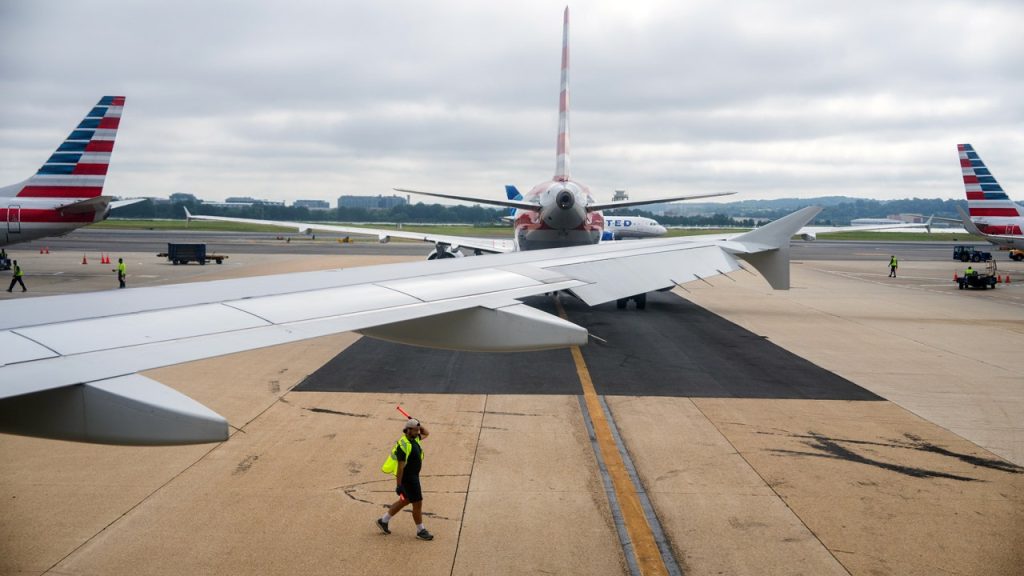Emergency Landing at Dulles: American Airlines Flight Diverted Due to Smoking Device
In a swift response to a potentially dangerous situation, American Airlines Flight 357 made an emergency landing at Washington-Dulles International Airport on Saturday after crew members reported smoke emanating from a passenger’s device. The flight, which had departed from Philadelphia and was bound for Phoenix, landed safely in Washington, D.C., after the quick-thinking crew successfully contained the smoking device according to airline representatives. The incident demonstrates the airline industry’s emergency protocols in action, highlighting the importance of crew training and preparedness for unexpected situations during flights.
The diverted aircraft was carrying 160 passengers and six crew members when the incident occurred. Following standard emergency procedures, the plane was met by emergency personnel upon landing at Dulles. Despite the concerning nature of the situation, airline officials reported that both passengers and crew were able to exit the aircraft normally through regular deplaning procedures. This orderly evacuation speaks to the effectiveness of the crew’s management of what could have been a chaotic situation, reinforcing the airline’s commitment to passenger safety even during unexpected events. The Metropolitan Washington Airports Authority confirmed that despite the emergency landing, there were no disruptions to broader flight operations at Dulles International Airport.
American Airlines expressed gratitude for their crew’s professionalism during the incident, issuing a statement that read: “We appreciate the professionalism of our crew and thank our team who are working to get our customers to their destination as quickly as possible.” This acknowledgment highlights the critical role that well-trained flight crews play in managing in-flight emergencies and ensuring passenger safety. The airline’s response also emphasized their commitment to minimizing disruption for affected travelers by working to get them to their intended destination of Phoenix with as little delay as possible under the circumstances.
Details regarding what exactly caused the passenger’s device to start smoking remain unclear at this time. The incident serves as a reminder of the potential hazards associated with personal electronic devices on aircraft, which has become an increasingly important safety consideration in modern air travel. Airlines and safety regulators have implemented various policies regarding device usage, charging, and storage—particularly for items containing lithium-ion batteries, which can pose fire risks if damaged or defective. This incident may prompt renewed attention to passenger education about proper device handling during flights.
Fortunately, no injuries were reported in connection with the incident, and there was no mention of any arrests being made. This positive outcome can be attributed to several factors, including the crew’s quick response, the successful containment of the smoking device, and the orderly emergency landing procedure. The lack of injuries underscores the effectiveness of the multiple layers of safety procedures that airlines have in place to address potential in-flight emergencies, from crew training to aircraft systems designed to handle unexpected situations.
This incident joins several other recent emergency landings involving American Airlines flights that have made headlines. Just recently, the National Transportation Safety Board found that engine parts had been installed incorrectly on an American Airlines plane that caught fire in a separate incident. Another American flight made an emergency landing after an engine started smoking, and in yet another case, a passenger was taken into custody after making a direct threat that resulted in runway closures at Seattle’s airport. While these incidents represent a small fraction of the thousands of flights operated safely every day, they highlight the ongoing importance of rigorous safety protocols, proper maintenance procedures, and effective crew training within the airline industry to ensure passenger safety remains the top priority.


